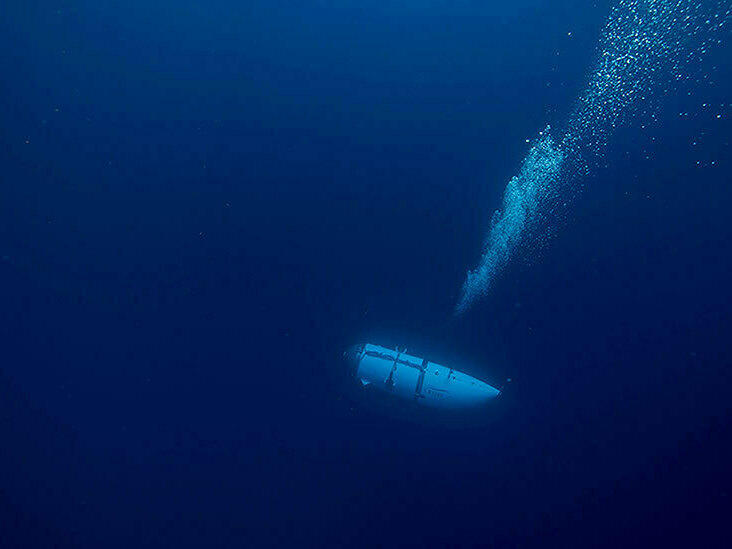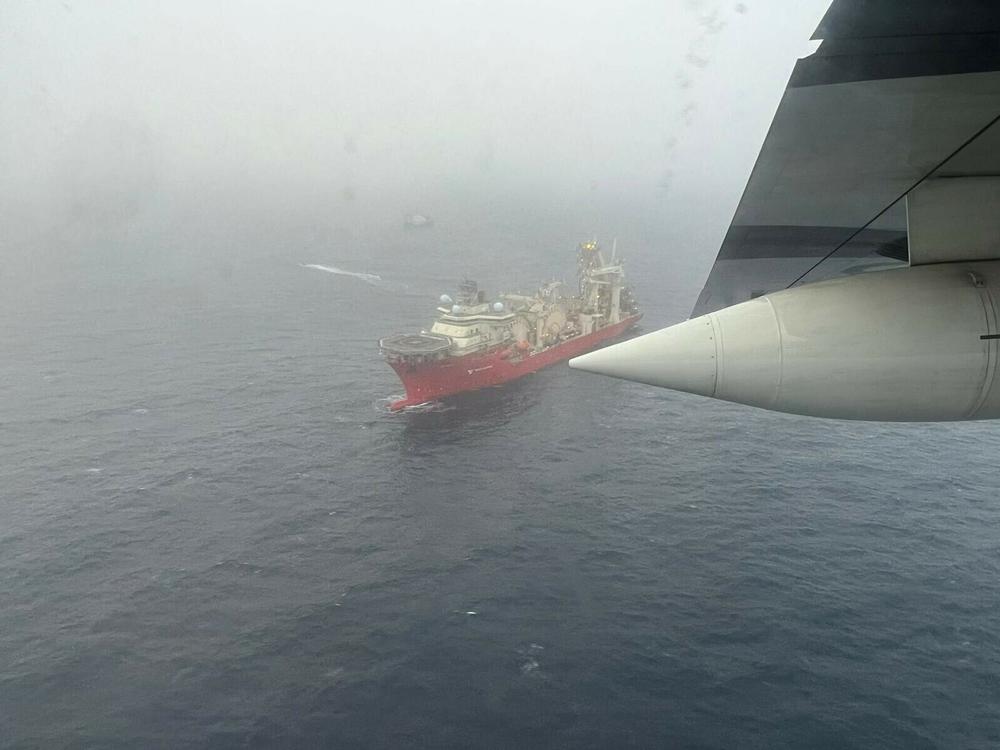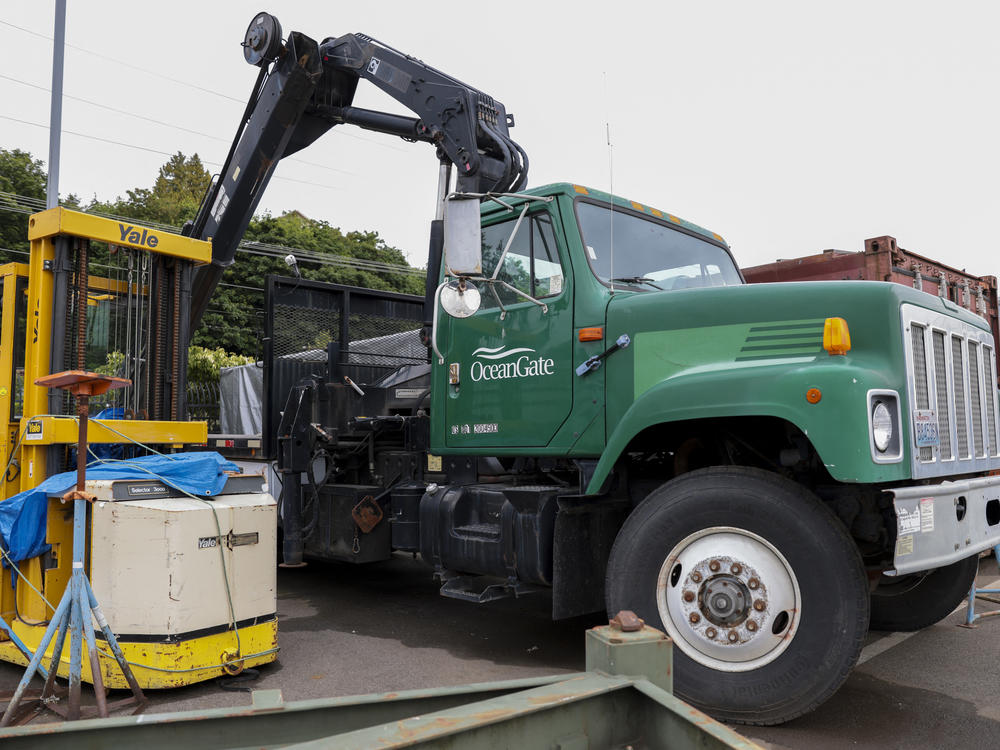Section Branding
Header Content
Missing submersible: Rescuers race to find Titan after detecting underwater noises
Primary Content
Rescue teams involved in the hunt for a missing submersible that had planned to visit the wrecked Titanic said "noises" had been detected early Wednesday close to where the sub ended contact with its control ship.
Experts involved in the search say that the sub, which is carrying five people, contains an oxygen supply that may run out early Thursday morning.
Here's a guide to what we know.
What's the latest on the search efforts?
The U.S. Coast Guard said that a maritime surveillance plane operated by Canada detected the noises, which experts from the U.S. Navy are now analyzing.
U.S. authorities said various underwater search efforts had been moved to the location of the noise to discover its source, but that so far, underwater drones operated remotely had "yielded negative results."
U.S. Coast Guard Rear Adm. John Mauger said the source of the noise was still unclear.
"You have to remember that it's the wreck site of the Titanic, so there is a lot of metal and different objects in the water around the site," Mauger said in an interview with CBS News on Wednesday morning.
The U.S. Coast Guard tweeted early Wednesday that the data from the Canadian aircraft, known as a P-3 Orion, would nevertheless potentially form part of future search plans once it had been analyzed.
Experts involved in the search and with knowledge of the sub's technology say that the oxygen on board is likely to last only until early Thursday morning.
The remoteness of the location and extent of the search area — larger than Connecticut on the surface and possibly extending 2.4 miles down to the ocean floor — has complicated efforts to locate the vessel and its passengers.
"It takes time, and it takes coordination," said Coast Guard Capt. Jamie Frederick at a news conference in Boston.
Several commercial vessels have joined the effort since Sunday, including a ship that's designed to lay pipes on the ocean floor. Combined with the resources from the Canadian and U.S. Coast Guards, at least three of the vessels on site or en route are capable of deploying remotely operated diving robots.
One Canadian Coast Guard ship on the scene, the John Cabot, has side-scanning sonar capabilities, the U.S. Coast Guard said on Wednesday.
Also en route is the Canadian Ship Glace Bay, which contains a mobile decompression chamber and is staffed with medical personnel.
The design of the submersible, called Titan, means that only those outside the vessel can unseal it, so regardless of whether it rises to the surface or not, the passengers will require outside help to escape.
When and where did the sub go missing?
Titan lost contact with its support ship — a Canadian research vessel called Polar Prince — less than two hours after it first entered the water on Sunday.
At that point, it was already more than halfway down to the Titanic's wreck on the Atlantic's ocean bed, roughly 900 miles east of Cape Cod in Massachusetts.
Who was on board?
The people on board Titan include pilot Stockton Rush, the head of OceanGate, the company that developed the submersible; Paul-Henri Nargeolet, a French underwater wreck expert who has written about the Titanic and visited the wreck dozens of times; a British entrepreneur Hamish Harding; and father-son Pakistani nationals Shahzada and Suleman Dawood.
A former passenger of the Titan described it as like being in a "minivan without seats" and says the interior design relies on "off-the-shelf parts," including a video game controller for steering.
What was the sub's mission?
The missing vessel is owned by OceanGate, a company based in Washington that's become a major chronicler of the Titanic's decay.
In May, OceanGate shared the first-ever full-size digital scan of the wreck site, which is slowly succumbing to a metal-eating bacteria and at risk of disintegrating in a matter of decades.
For $250,000 a person, the company promises tourists an underwater voyage to explore the remains of the Titanic from the seafloor. From St. John's in Newfoundland, Canada, explorers travel 380 miles offshore and 2.4 miles below the surface. A full trip can take eight days and include multiple dives.
If successful, the dives offer a glimpse of what's left of the 1912 crash into an iceberg, which took the lives of all but 700 of the Titanic's 2,200 passengers and crew.
Why did the sub go missing?
It's still unclear why the submersible lost communication with its control crew on the expedition ship.
When asked for more information on Tuesday, a spokesman for the U.S. Coast Guard said that its unified search command, which includes OceanGate, is fully focused on the rescue effort.
What's known about OceanGate's safety record?
Years before the Titan went missing, OceanGate faced several complaints and warnings about the safety of its submersible vessels.
Records from a 2018 lawsuit show that the company's former director of marine operations, David Lochridge, flagged potential safety issues with the Titan as it was under development in 2015.
Lochridge was particularly concerned about the company's lack of testing on the Titan's 5-inch-thick carbon fiber hull, which employed an experimental design developed in collaboration with NASA. He also said that the Titan's port window was only designed to withstand depths of about 4,200 feet — far shallower than the 13,000-foot depth of the Titanic.
OceanGate responded in legal filings by saying it relied on acoustic testing "better suited" to detect safety issues. The company fired and sued Lochridge, accusing him of breaching his contract.
At least two documented safety incidents with the Titan are public knowledge.
During a 2022 expedition, OceanGate reported that its sub had experienced a battery issue during a dive and had to be manually reattached to its lifting platform, court filings show.
In the same year, the vessel lost contact with its surface crew for nearly five hours during a dive, according to CBS correspondent David Pogue, who was observing the mission for a journalistic report on the company.
Pogue reported that a waiver for passengers of the Titan clearly states the vessel has not been approved or certified by any regulatory body.
OceanGate's founder, who is reportedly on board the missing Titan, said in a 2019 interview that the commercial submarine industry's regulations stood in the way of progress.
"It's obscenely safe because they have all these regulations," Rush told The Smithsonian Magazine. "But it also hasn't innovated or grown."
NPR's Ayana Archie and Juliana Kim contributed reporting.
Copyright 2023 NPR. To see more, visit https://www.npr.org.



